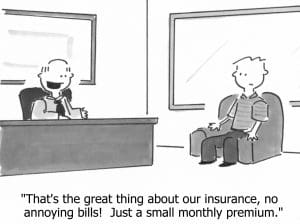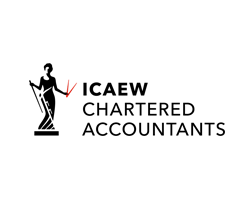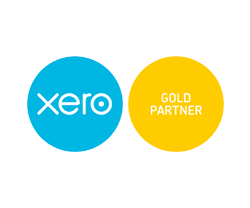National Insurance Contributions for 2020/21

Ahead of the new tax year, which is only two months away, the government has announced the 2020/21 National Insurance Contributions (NICs) thresholds. There are also some key changes to the Employment Allowance.
There are four classes of NICs. In this blog we’ll take a look at the new rates and thresholds for each of these and to whom they will apply. We’ll also cover off the Employment Allowance changes.
Class 1 NICs
This is the class of NICs that employers and their employees pay. The table below details the monthly thresholds for 2020/21 compared to those for 2019/20.
| 2020/21 | 2019/20 | |
| Lower earnings limit | £520 | £512 |
| Primary threshold | £792 | £719 |
| Secondary threshold | £732 | £719 |
| Upper earnings limit | £4,167 | £4,167 |
What do those limits and thresholds mean?
Once your earnings are above the lower earnings limit, you begin to accrue state benefit entitlements, including state pension.
The primary threshold is the point that employees begin to pay NICs at a rate of 12%. So it is possible to accrue state benefit entitlement without actually paying any NICs.
The secondary threshold is the point that employers begin to pay NICs at a rate of 13.8%.
The upper earnings limit is the point that employees stop paying NICs at 12% and begin to pay it at 2%.
These changes to NICs mean that employees currently earning over £792 per month will save around £105 per year.
Class 2 NICs
This is one of the classes of NICs paid by the self employed and is the class that accrues state benefit entitlement. The rates and thresholds are as follows
| 2020/21 | 2019/20 | |
| Weekly rate | £3.05 | £3.00 |
| Small profits threshold | £6,475 | £6,365 |
If a sole trader has been trading for a full tax year and their income after allowable expenses is above the small profits threshold then from 2020/21 they will pay Class 2 NICs of £158.60 (52 weeks at £3.05) an increase of £2.60 upon 2019/20.
Have you noticed something about the point that the self employed begin to accrue state benefits? It’s higher than what it is for employees and it’s more expensive. An employee earning £6,475 will earn their NICs stamp without paying a penny of NICs while an equivalent sole trader will need to have paid £158.60.
If a sole trader has income below the small profits threshold then they should consider paying Class 2 NICs voluntarily in order to keep their NICs record up to date. This avoids the more costly…
Class 3 NICs
These are paid to make up a shortfall in an individual’s NICs record and each week of shortfall can be paid up at a rate of £15.30 in 2020/21. This compares to £15.00 per week in 2019/21.
To qualify for the full state pension you must have at least 35 years in which earnings have been either above the lower earnings limit if employed or above the small earnings threshold if self employed. Any shortfall will mean you receive less state pension.
So if you come to state retirement age and there is a five year shortfall in your NICs record then to bring that up to date in 2020/21 will cost you £3,978. You would need to weigh up that outlay with the increase in pension it would buy over the course of your retirement.
Class 4 NICs
This is the second class of NICs paid by the self employed. It doesn’t count toward state benefits or pension and is essentially just tax by any other name. The following table details the new rates and thresholds.
| 2020/21 | 2019/20 | |
| Lower profits limit | £9,500 | £8,632 |
| Upper profits limit | £50,000 | £50,000 |
The lower profit limit is equivalent to the primary threshold used for employees only the self employed pay Class 4 NICs at 9% rather than 12%.
The upper profits limit is analogous to the upper earnings limit and works in the same way as it does for employees, i.e. the rate at which Class 4 NICs is paid reduces down to 2% on profits above £50,000.
The Employment Allowance
This is an allowance given to employers so they can reduce their employer NICs by up to £3,000. In 2019/20 every employer in the country could apply to use this allowance, subject to certain restrictions. So even Tesco had £3,000 knocked of their NICs bill in 2019/20!
The government has decided that the allowance should be targeted at small businesses so from 2020/21 only businesses with an employer NICs liability of under £100,000 per year will qualify for the allowance.
While it’s hard to argue with this in principle – after all if Tesco are relying on a £3,000 handout from the government then they’ve clearly got much bigger problems to deal with – you don’t need to be that large a company to lose entitlement. In fact, many small businesses will become ineligible for the allowance from April 2020, in particular those with highly skilled, highly paid staff.
A consequence of giving the employment allowance to some but not all is that it becomes a de minimis state aid. Businesses can only receive up to €200,000 of this type of state aid over a three year period if they are to stay within EU rules. Of course, the UK has now left the EU so how state aid will work beyond the transitional period will only be known once the final trade deal has been negotiated.
State aid treatment, however, can have some benefits to companies making R&D claims. Currently, only the reduced employer NICs go into the computation of qualifying expenditure but from 2020/21 the employer NICs cost covered by the employment allowance will be available for relief under the R&D Expenditure Credit (RDEC) scheme. Every little helps!





